The Salt Path and me
You be Gillian Anderson, I'll be Jason Isaacs
The Salt Path is one of Corinne’s favourite books. It recounts the walk Raynor Winn and her husband Moth made round the South West Coastal Path. Its 630 miles took them along the coastlines of Somerset, Devon, Cornwall and Dorset.
The couple had lost their home after a speculative business deal with a friend went sour. Not only that, Moth had been diagnosed with a debilitating Parkinsons-like neurodegenerative disease. The doctor gave him only seven years to live.
They really had nothing left to lose.
So they walked.
A film adaptation of the book came out last weekend.
In recent years I too had become fixated on the South West Coastal Path. I had walked sections of it over the years but I had got it into my head that I was going to do the whole thing and in the right order.
This was purely a theoretical exercise played out between me and the 350 pages of the go-to guide on the path. The book and its author Paddy Dillon get a lot of air-time in the film.
“What would Paddy do?” and “Paddy wouldn’t like that” are phrases that Gillian Anderson and Jason Isaacs would throw at each other in moments of stress. As you will see, they weren’t the only ones to appeal to ‘Saint Paddy’ as they called him.
The South West Coastal Path was just a fantasy until I persuaded my friend Peter to do it with me. We decided we weren’t going to do it all in one go, just a week per year, starting in Minehead in Somerset in 2025 and finishing in Poole in 2030.
We polished off the first tranche just a few weeks ago. So it was fresh in our minds when the three of us - Corinne, Peter and myself - went to see the film together.
This isn’t a film review. We all loved it.
Neither is it a travelogue of our week on the road. That would be boring.
However I thought it would be interesting to pick out the elements and episodes from The Salt Path that chimed with our experience.
Like Raynor and Moth, we carried everything with us. And like them, it felt really liberating about having only the bare necessities on our back.
We felt especially smug when we came across other walkers who were having their suitcases transported from one overnight stop to the next by taxi.
Except we had a roof over our head every night rather than a tent. And we had funds to pay for food along the way. Unlike Raynor and Moth, who were relying on government universal credit to fuel themselves and a tent to shelter in at the end of each day.
Neither did we experience the stigma of homelessness that Raynor and Moth met along the way. Gruff men in Barbours harumphing and bashing on their tent at dawn with their walking sticks. Holidaymakers in chocolate box pretty seaside towns shrinking at the sight of them.
Homelessness is still homelessness even amidst some of the most spectacular scenery that England has to offer.
We mostly stayed in B&Bs but our last stop was at a hotel in Croyde Bay owned by one of the biggest trade unions in the UK.
I think it was run for the benefit of their members so we weren’t quite clear why they let us in. I think they needed the revenue as we were the only guests that night. The vibe was very much the Overlook hotel in The Shining.
The experience of a long-distance walk is as much about those you criss-cross with on the way, your companions on the route, as it is the miles travelled.
In the film, Gillian and Jason encounter a cast of Londoners who invite them back to their Grand Designs style second home nearby. They have mistaken Moth for Simon Armitage, the Poet Laureate who happens to be on the Path at the same time to publicise his latest book.
Further on Raynor encourages a trafficked girl to leave the county-lines gang she is caught up with. They also befriend another young woman in a cafe who inspired by their example, hands in her notice, bestowing the couple with a much needed bag of pasties on the way out.
Peter and I didn’t quite change as many lives during our week. But many of our adventures did happen in cafés.
For example, we were checking out potential lunch spots in Ilfracombe when we came across a particularly eye-catching review.
The service was so poor, the reviewer said, that they had to wait “five minuets” for their coffee.
Expecting a full-on Jane Austen costume drama on arrival, we got a chilled surfer vibe instead.
We met Germans, Finns, Canadians and a lone American woman sporting a prominent ‘I didn’t vote for Trump’ badge, no doubt the accessory of the summer for European.
The only Brits we befriended were one chap doing two stages for every one we did and a volunteer for the RNLI who had completed all 630 miles in March in 30 days. We also heard tell of a 78 year old Canadian who had done the whole thing in one go and then returned the next year to do it in the opposite direction.
Made us feel like proper slouches.
But we are going to do it all every inch in our own good time.
There will be estuaries en route with ferries to tempt us to cut corners. But in the words of Saint Paddy, we are determined not to “leave our trail in tatters” by cheating.
In the film we see Jason Isaacs, in the role of Moth, declaiming Seamus Heaney’s translation of Beowulf at a quayside surrounded by holidaymakers. Gillian passes the hat round and collects enough for a fish and chips supper.
Peter and I are men of letters but we were more private it. But definitely more pretentious.
Each morning before we set off, we would have a pep talk from TS Eliot.
To be more specific, Spotify would play us a section of the ‘Waste Land’ in the great man’s declamatory tones.
Thanks to that inspiration, scree descents would be accompanied by cries of “Marie, Marie, hold on tight”.
And we would pause on cliff-tops to remember:
Phlebas the Phoenician, a fortnight dead
Forgot the cry of gulls, and the deep sea swells
And the profit and loss.
Thank goodness, there was no-one around to overhear all this.
But we will definitely put Beowulf down on the list for next year’s daily motivational speeches, perhaps even in the original Old English.
Hwæt-ever, as that good king would say.
One early landmark the film lingered on, as did we, was Culbone Church.
It is dedicated to Saint Beuno, an early Welsh saint that had sailed across the Bristol Channel to spread the word to the heathen in England. The day before we had come across Saint Dubricious who had also taken a coracle across the water and ended up with a church in Porlock named after him.
Culbone’s setting is idyllic. In Simon Jenkins’s words in England’s Thousand Best Churches, there is a “magical stream dancing past with woods threatening to engulf the graveyard”.
It may be the “smallest, most isolated and picturesque in England” but that remoteness also meant that Culbone must have been one of the most miserable places in Somerset for much of its history.
In the 14th century it was where French prisoners were housed. Two centuries later it was a leper colony. Then a prison again in the 18th century. Now it’s an Instagram hot-spot.
It was clear from the very start that this trip was also going to be a nostalgia trip for me.
Children were still playing cricket on the beach at Minehead like we did in the 70s during our caravan holiday at nearby Blue Anchor Bay.
The steam train line from Minehead to the outskirts of Taunton continued to run.
And rock pooling in Lynton was something families did now as then.
When I was a bit older the parents of my oldest friend Louis would bring us to Braunton, the final stop on this year’s route, where they had a cottage.
I have vivid memories of fishing the river Caen there for trout to take home for tea. Don’t tell anyone but we used a worm as bait, illegal then as it is now.
50 years later I walked into the newsagents in the middle of the village and introduced myself to the proprietor with the words: “Uncle Louis sends his best regards”. To his credit nephew Kieran took the sight of a tired stranger in full walking gear totally in his stride.
I have no memories from back then of just how unspeakably beautiful Exmoor and the north Devon coast was. The coastline was just a playground where we swopped the swings and roundabouts of our urban childhood for sea, sand, fishing nets and wellies.
The whole week the sea was always in sight on the right as it will be every year we do the Path. It truly gave me the sense that I live on an island, a sceptred isle.
Walking the South West Coastal Path, I was thankful for the fine weather, for my good health, my fine companion Peter and the means to bite off this first chunk in relative comfort.
I can’t wait to get the train to Barnstaple the same time next year and do it all again.


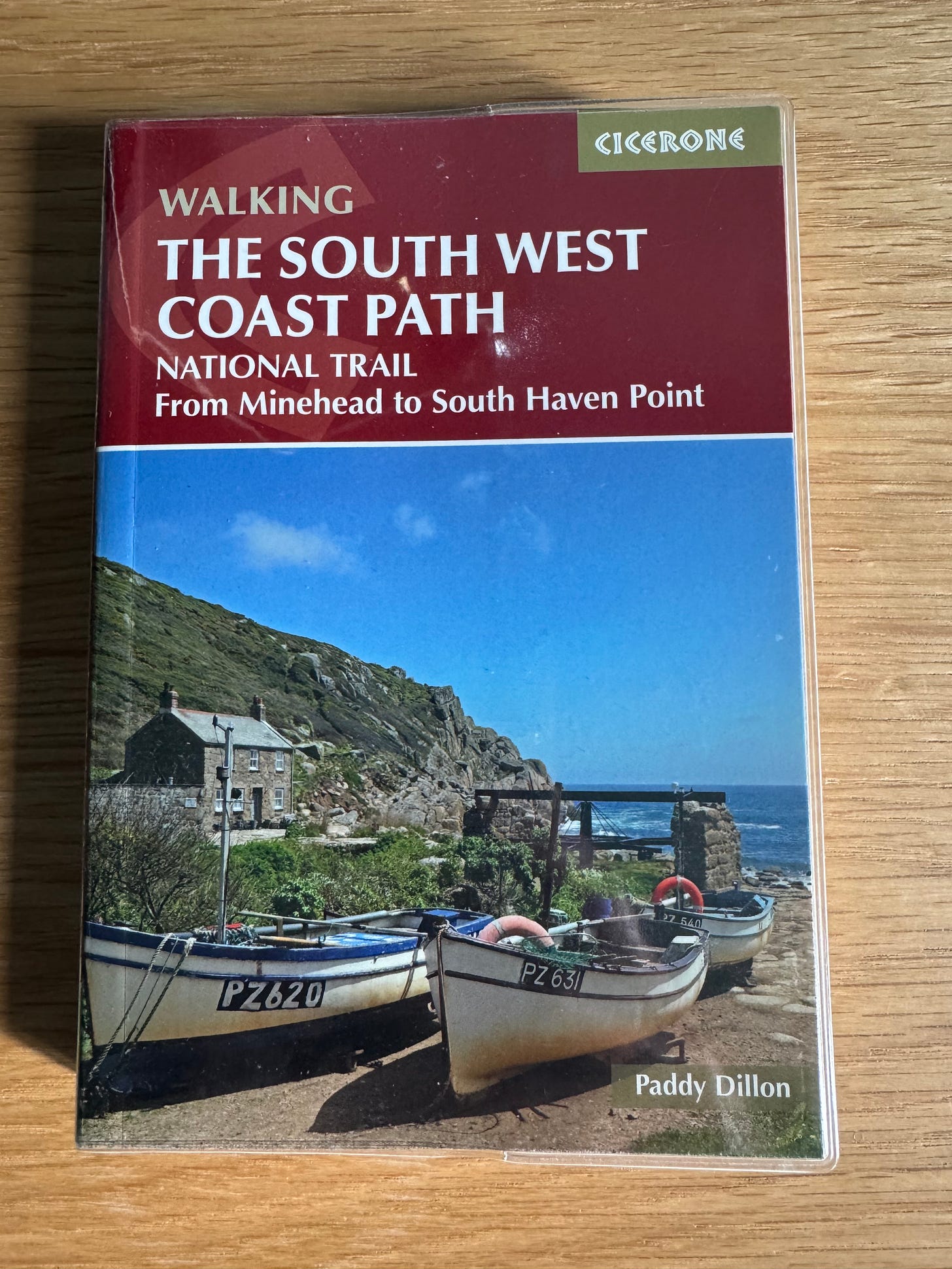
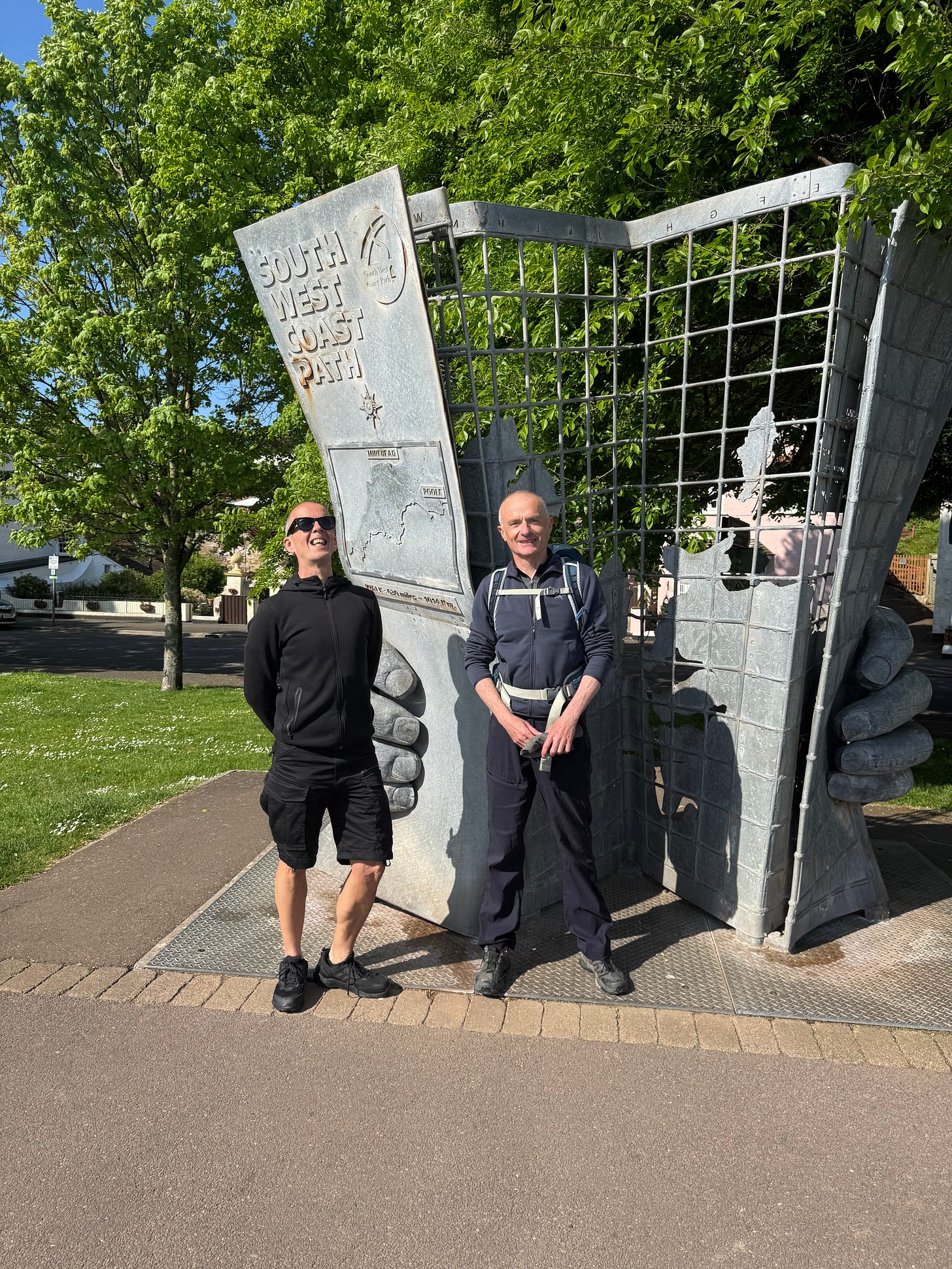




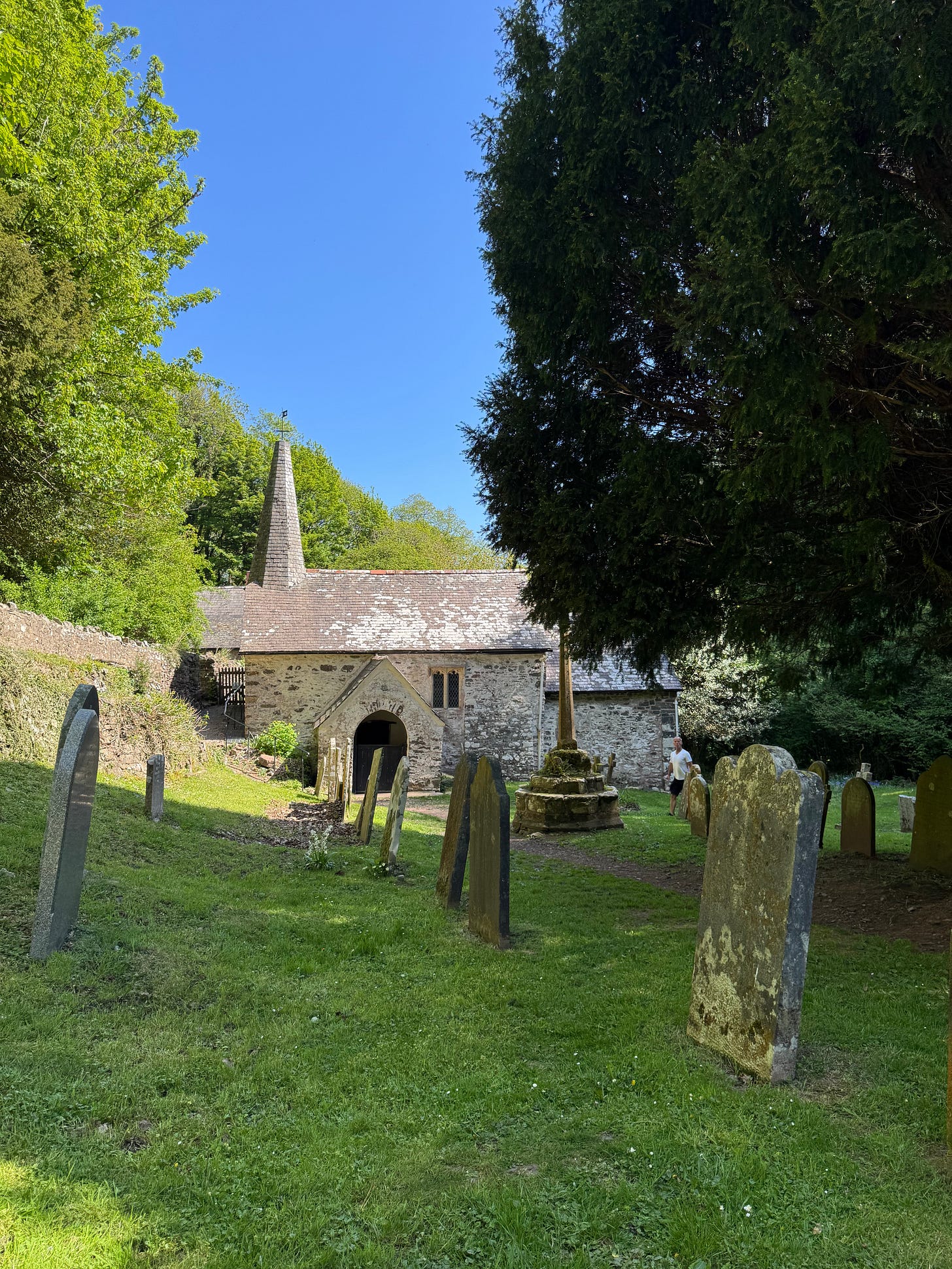
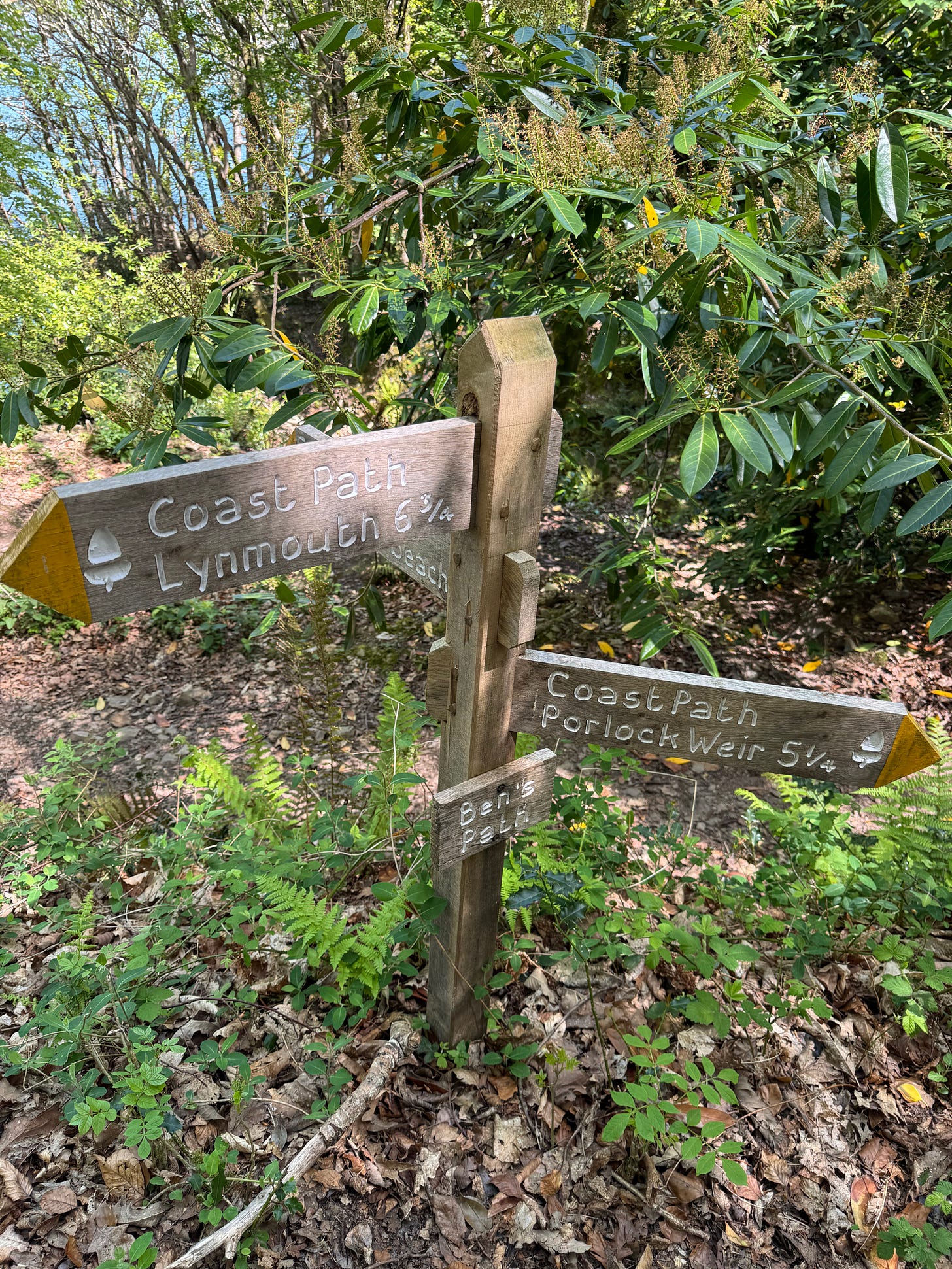
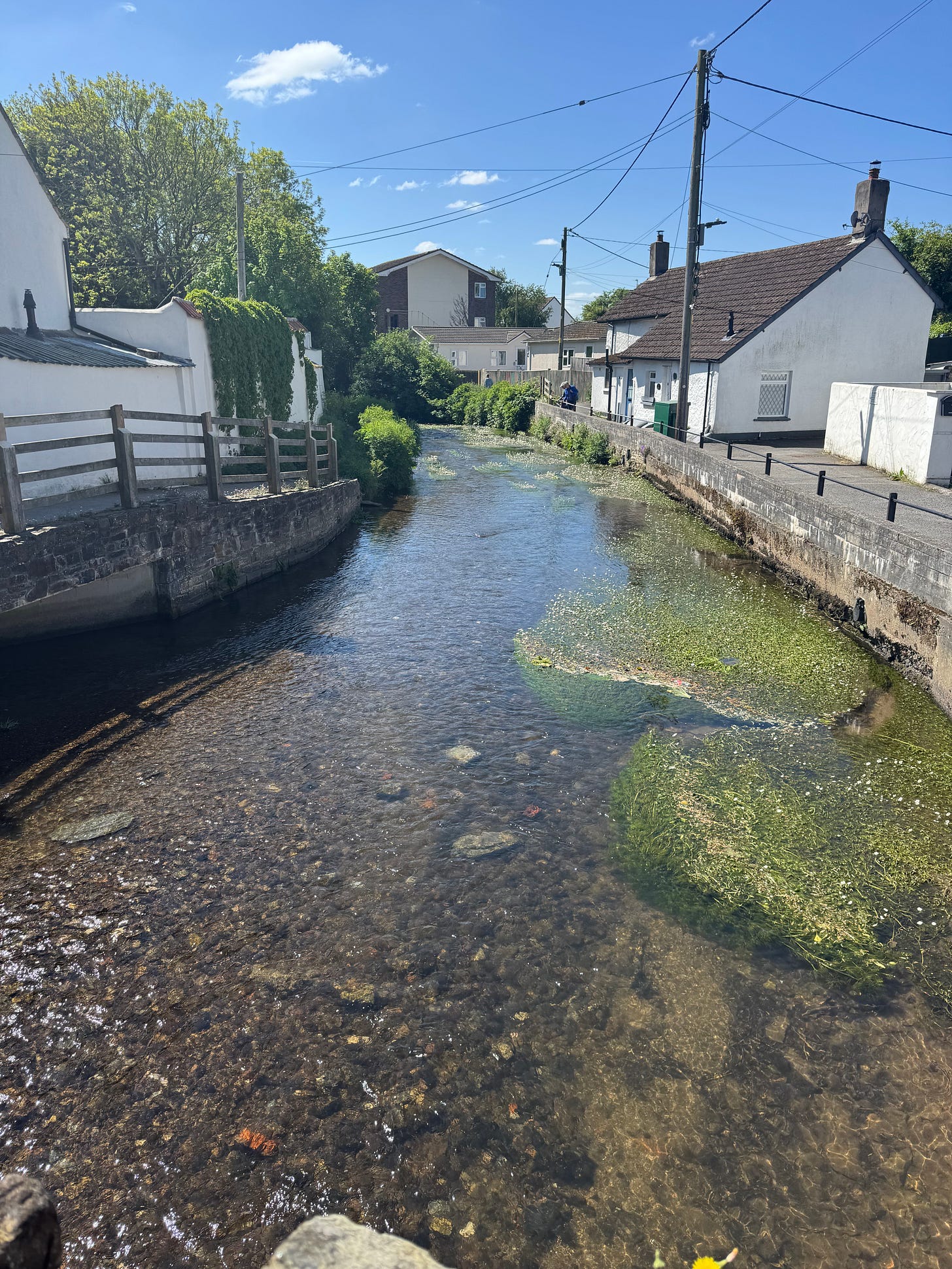
“O you who turn the wheel and look to windward, Consider Phlebas, who was once handsome and tall as you…” 😉
Looking forward enormously to the next instalment of looking to windward… 🤗